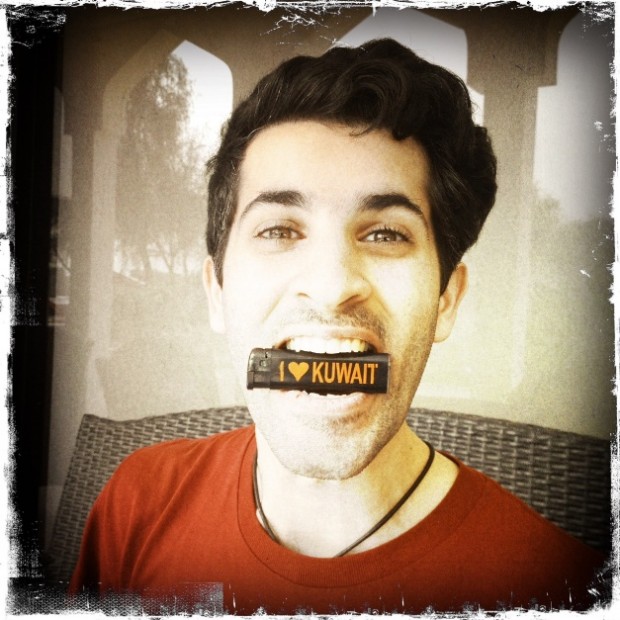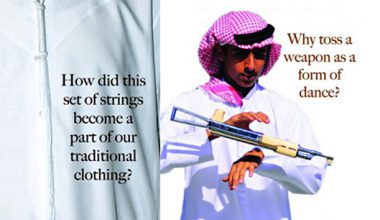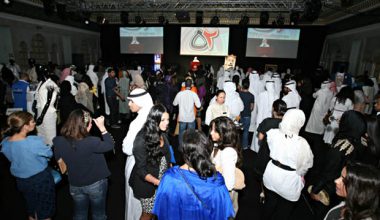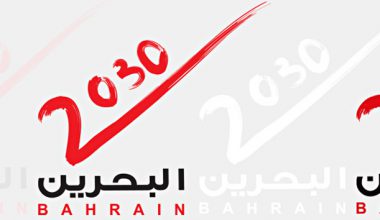Khaleejesque's New York correspondent, Plus Aziz, is a Senior Trend Analyst at brand consulting group FATHOM+HATCH. Next week, he'll be talking at Nuqat Kuwait Design Conference about the unique field of Trend Spotting. He explains what it is…
I’m going to conduct an introductory 3-day workshop on Trend Spotting at Nuqat’s upcoming conference in Kuwait. While I’m excited about the workshop, I’ve come to realize how little is known about this field. So I decided to write a post defining trend spotting, the types of problems it solves, and convey a handful of underlying principles.
What is Trend Spotting?

Trend spotting is a field that helps us analyze and predict where culture is going. The first trend forecaster is a woman named Li Edelkoort, an established icon in the fashion industry. Trend spotting has since grown to become a crucial component of how entrepreneurs, organizations, celebrities, and brands remain connected with cultural developments.
Trend spotting is essentially about pattern recognition. The fact that something is trendy does not necessarily mean that it will disappear; in fact, many trends reflect important shifts in the evolution of our culture that are irreversible. And this is precisely why it is such an important field: if change is a constant, trend spotting constantly works to help you keep up with change.
The end products of trend spotting vary. The output depends on the budget, but the work can shape anything from a cross-departmental corporate summit to writing a compelling report/presentation on a specific topic. Often times, trend spotting provides great content for immersive experiences. Imagine going to a city and getting a tour where your ‘trend spotter tour guide’ takes you to the most cutting edge locations of that city. Imagine walking into a room where 100 products from all over the world have been gathered to help develop the thinking behind an innovation.
Types of Problems Trend Spotters Solve
Before we go into the principles behind trend spotting, let’s take a look at types of problems it can help resolve. Part of the confusion around trend spotting is generated by the diversity of problems it can tackle. Here are some of the projects I have worked on personally:
- I’m starting a new business. What can I do to create a superior business plan, product, or service to ensure the success of my venture? How do I make sure I’m building a business based on an emerging need that is destined to grow?
- We’re planning the launch of a new retail store; what’s the retail ecosystem like over there? How do we design a store that will be both attractive to shoppers and push the boundaries of what exists locally?
- My company’s design and engineering departments have conflicting perspectives on a future product. How can I inspire them in a way that aligns their points-of-view and re-align our business goals?
- My company seems to have lost sight of what the market demands. Our target audience has changed and we need to re-align our internal mindset with the mindset of our end-user.
- I have a passion for photography and writing. How can I monetize these passions so that I am making money doing what I love?
- What technological and scientific breakthroughs will impact the future of my industry?
Trend spotting can work to clarify your vision. It helps you understand on-ground reality and can be further developed by layering on other research methodologies. If executed well, it helps create opportunities to work with social scientists or statisticians to verify actionable trends, enrich your vision, and help you strategize.

Major Principles That Drive Trend Spotting
Now that you have a better idea of the problems trend spotters work to solve, let’s look at some of the principles that shape the field. I can write a whole book about these principles, but I’ve selected a few core concepts that are universal to trend spotting everywhere in the world.
1. From Cool Hunting to Consulting
Businesses and brands look to trend researchers to remain updated on shifts in their target market’s thinking. Trend spotting is a field that grew from simply knowing what is in and what’s cool to becoming a full-fledged line of business that can be integrated into a brand’s overarching strategy.
Takeaway Principle: Trend spotting does not exist in a vacuum. It is an open field that embraces new methodologies of studying culture; it is molded by available resources as well the nature of the observation that is being dealt with.
2. Macro x Micro
Trends don’t appear out of thin air; there is a confluence of social, economic, political, and environmental forces that come together to make them happen.
Takeaway Principle: You’re not doing it right if you’re ignoring the larger context of a trend. Be mindful of how the infrastructure of a culture is making a particular trend possible. It’s OK if your reasoning is not statistically proven, but there should be a line of reasoning nevertheless.
3. Intuition x Social Science
While trend spotting as a profession is in many ways a young person’s game, layers of analysis and synthesis are applied to assert the implications a trend has for a brand, product strategy, or line of business. Oftentimes, trained researchers in the fields of anthropology and/or sociology are pulled in to make sense of the data gathered. Young people are often more in touch with culture and embody the very shifts and change that a culture is experiencing.
Takeaway Principle: Trend spotting is scalable when the street intelligence of a young person is combined with the more structured thinking of a trained researcher or experienced strategist.
4. Slow Media x Fast Media
Traditional media and literature play an important role in helping us better understand culture. One should not dismiss the role of television, books, and magazines as mobile apps and social media grow in their influence.
Takeaway Principle: History matters. All forms of media impact our thinking about trends. The novelty of the new ought to be balanced with the long-standing impact of the old.
5. Trend Spotter x Trend Setter
There is a vague line between what constitutes influence and who reports on it. While some trend spotters are content with explaining culture, some go a step beyond by investing in how culture will be shaped. They may have so much clout and credibility that the culture they study responds to their interpretations. Thus they not only ‘have a perspective’ but they also have motives and desires to shape the future in a particular way.
Takeaway Principle: It’s OK to be biased. Trend spotters are human and it is not unusual to have an agenda. The only danger here is that they need to be transparent about their motivations and know how to rationalize them.
6. Mainstream Culture x Fringe Anecdotes
Oftentimes, the weirdest stuff is the most thought provoking. Outliers and anecdotal evidence can loosen up our thinking in imagining ‘what if’ scenarios.
Takeaway Principle: Anyone can give you an example of a trend, but only the best trend analysts can predict what will be adopted by the mainstream. Never dismiss a cultural observation just because it is not popular. Trend spotters must keep an eye on behavior that is extreme and eccentric.
7. Studying Consumers x Interviewing Experts
Many companies turn to consumers to test messages, better gauge perceptions, and better understand their market. When it comes to predicting the future, it is more productive to engage with business leaders, tastemakers, and influencers. These individuals live and breathe their industry so they have opinions that are stronger and better thought out. Oftentimes, trend companies will have a network of experts that they will tap for these types of insights.
Takeaway Principle: End users and consumers can’t tell you everything and they are rarely reliable in predicting what developments are likely to happen. Look to experts if you want to know the future of a given industry.
My workshop will sharpen participants’ ability to analyze culture and grow their awareness of different methodologies. They will be introduced to methods that improve their ability to recognize patterns by monitoring social media, articulating trends through photography work, leverages, RSS feeds, etc. all for the sake of helping our local creative and business communities become more adaptable to the fast pace of change our culture is experiencing.
To register in Plus Aziz's workshop, Trend Spotting 101, go to: nuqat.me
Plus Aziz is a musician and animation director at The World Music Parade, senior trends analyst at FATHOM+HATCH, contributing editor at PSFK, a social media consultant at Orthrus Studio, and NYC correspondent for Khaleejesque. Follow him on Twitter @PlusAziz







